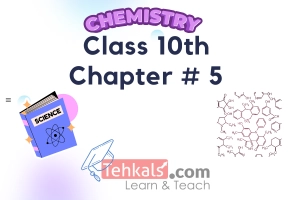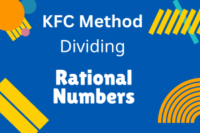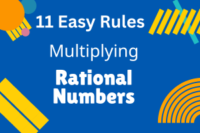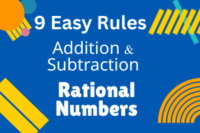Chemistry Class 10 Chapter 4
Published: 14 Dec 2023
Chemistry Class 10 Chapter 4 introduces the concept of “Hydrocarbons”. This is mainly chapter No. 12, “Hydrocarbons”, of the book of Class 10.
This article consists of Notes, SLO Based Notes and MCQs of chemistry, which cover your course, board papers and clear your chemistry concept for different types of tests.
Chemistry Class 10 Chapter 4 Notes
Hydrocarbons
SLO Base Questions
Chemistry Class 10 Chapter 4 MCQs
1. Hydrocarbons are the simplest type of _________________ compounds.(a) Organic
(b) Covalent
(c) Inorganic
(d) All of these
Show Answer
Organic
2. Hydrocarbons are composed entirely of _________atoms.
(a) C,N
(b) C, H
(c) C, O
(d) C, S
Show Answer
C, H
3. Diesel, gasoline, natural gas and liquefied petroleum gas (LPG) are common examples of _____________.
(a) Hydrocarbons
(b) Amines
(c) Electrovalent
(d) None of these
Show Answer
Hydrocarbons
4. Scientists classify hydrocarbons as ________________and unsaturated hydrocarbons.
(a) Super saturated
(b) Saturated
(c) Unsaturated
(d) All of these
Show Answer
Saturated
5. Saturated hydrocarbons are called________________.
(a) Alkynes
(b) Alkenes
(c) Alkanes
(d) Butane
Show Answer
Alkanes
To Download Complete Notes of Chemistry Notes 10 Class, Click on the given link.
6. Unsaturated hydrocarbons are called______________.(a) Alkynes
(b) Alkenes
(c) Alkanes
(d) Both a and b
Show Answer
Both a and b
7. As hydrocarbons contain only carbon and hydrogen, therefore they are ________________compounds.
(a) Non-polar
(b) Polar
(c) Weakly polar
(d) None of these
Show Answer
Non-polar
8. In hydrocarbons, the atoms are _______________bonded.
(a) Electrovalently
(b) Metallically
(c) covalently
(d) None of these
Show Answer
covalently
9. An alkane is a hydrocarbon that has only ______________bonds.
(a) Double
(b) single
(c) Triple
(d) None of these
Show Answer
single
10. Alkanes are also known as _____________hydrocarbons.
(a) Saturated
(b) Unsaturated
(c) Super-saturated
(d) None of these
Show Answer
Saturated
11. Alkanesdonot contain_______________.
(a) Open chains
(b) rings
(c) Substituents
(d) None of these
Show Answer
rings
12. Alkanes have the general formula ______________where “n” is the number of carbon atoms.
(a) $ C_nH_{2n} $
(b) $ C_nH_{2n-2} $
(c) $ C_nH_{2n+2} $
(d) None of these
Show Answer
$ C_nH_{2n+2} $
13. An alkane in shape of ring is called______________________.
(a) Cyclo alkane
(b) Alkane
(c) Straight chain alkane
(d) None of these
Show Answer
Cyclo alkane
14. The general formula of cycloalkane is_______________.
(a) $ C_nH_{2n} $
(b) $ C_nH_{2n+2} $
(c) $ C_nH_{2n-2} $
(d) None of these
Show Answer
$ C_nH_{2n} $
15. In alkanes and cycloalkanes, all four bonds are ______________covalent bonds.
(a) Triple
(b) Double
(c) single
(d) None of these
Show Answer
single
16. Alkanes and cycloalkanes are _______________.
(a) Highly reactive
(b) Less reactive
(c) Moderate
(d) None of these
Show Answer
Less reactive
17. Alkanes are also called as _____________.
(a) Paraffin’s
(b) Olefins
(c) Monoffins
(d) None of these
Show Answer
Paraffin’s
18. Alkanes and cycloalkanes from a series of compounds known as _____________.
(a) Functional group
(b) Homologus series
(c) Family
(d) None of these
Show Answer
Homologus series
19. The molecular formula of methane is ______________.
(a) $ CH_4 $
(b) $ C_2H_6 $
(c) $ C_3H_8 $
(d) None of these
Show Answer
$ CH_4 $
20. The molecular formula of ethane is _____________.
(a) $ CH_4 $
(b) $ C_2H_6 $
(c) $ C_3H_8 $
(d) $ C_4H_{10} $
Show Answer
$ C_2H_6 $
21. The condensed formula of ethane is______________________.
(a) $ CH_3CH_3 $
(b) $ CH_4 $
(c) $ CH_3CH_2CH_3 $
(d) None of these
Show Answer
$ CH_3CH_3 $
22. $ C_3H_8 $ is the molecular formula of _________________.
(a) Pentane
(b) Butane
(c) propane
(d) Ethane
Show Answer
propane
23. The condensed formula for propane is_____________________.
(a) $ CH_4 $
(b) $ CH_3CH_2CH_3 $
(c) $ CH_3CH_3 $
(d) None of these
Show Answer
$ CH_3CH_2CH_3 $
24. The molecular formula of butane is ______________.
(a) $ CH_4 $
(b) $ C_2H_6 $
(c) $ C_3H_8 $
(d) $ C_4H_{10} $
Show Answer
$ C_4H_{10} $
25. $ C_5H_{12} $ is the molecular formula of _______________.
(a) Pentane
(b) Butane
(c) Heptane
(d) Hexane
Show Answer
Pentane
26. The naming of organic compounds before 1947 was based on the _____________.
(a) Greek system
(b) Common system
(c) Albanian System
(d) None of these
Show Answer
Common system
27. “Each different compound should have a different name”. This was the main principle of ___________.
(a) IUPAC
(b) VSEPR
(c) CFT
(d) MOT
Show Answer
IUPAC
28. The rules for naming an organic compound is________________.
(a) Hybridization
(b) Electrophoresis
(c) Nomenclature
(d) None of these
Show Answer
Nomenclature
29. These alkanes and cycloalkanes can be prepared by_______________.
(a) Addition of alkenes
(b) Addition of alkynes
(c) Reduction from alkyl halides
(d) All of these
Show Answer
All of these
30. The reaction in which an atom or group of atoms are added to a compound that has a double or triple bond is called an ___________reaction.
(a) Addition
(b) Oxidation
(c) Halogenation
(d) None of these
Show Answer
Addition
31. Hydrogenation means addition of _________to alkene or alkyne
(a) Carbon
(b) Hydrogen
(c) Oxygen
(d) None of tehse
Show Answer
Hydrogen
32. In Hydrogenation, the unsaturated hydrocarbons are converted to ____________ hydrocarbons.
(a) Saturated
(b) Stable
(c) Reactive
(d) Non-reactive
Show Answer
Saturated
33. Hydrogenation takes place in the presence of nickel catalyst at _____________temperature.
(a) $ 500-750 {}^oC $
(b) $ 250-300 {}^oC $
(c) $ 950-1000 {}^oC $
(d) None of these
Show Answer
$ 250-300 {}^oC $
34. Hydrogenation takes place in the presence of __________catalyst at room temperature.
(a) Nickel
(b) Palladium
(c) Platinum
(d) None of these
Show Answer
Platinum
35. $ CH_2=CH_2 + H – H \underset{{ 250 – 300 {}^oC }}{\stackrel{ { Ni }}{\longrightarrow}} $ _______________.
(a) $ CH_3—CH_3 $
(b) $ CH_4 $
(c) $ CH_4—CH_2 $
(d) $ CH_3—CH_2—CH_3 $
Show Answer
$ CH_3—CH_3 $
36. Reduction means addition of __________________.
(a) Oxygen
(b) Hydrogen
(c) Carbon
(d) None of these
Show Answer
Hydrogen
37. Reduction of alkyl halides occur in the presence of ________ and Hydrochloric acid $ (HCl) $.
(a) Osmium
(b) Ncikel
(c) Zinc dust
(d) All of these
Show Answer
Zinc dust
38. $ CH_3—I + 2[H] \longrightarrow CH_3—H + H—I $.
What are the reagents used in this reaction.
(a) $ Zn / HCl $
(b) $ Ni / Pt $
(c) $ Pt / Pb $
(d) $ Ni/ pb $
Show Answer
$ Zn / HCl $
39. The hydrogen at a time of its generation is called _____________hydrogen.
(a) Atomic
(b) Nascent
(c) Molecular
(d) None of these
Show Answer
Nascent
40. Which of the following member of alkane is a gas?
(a) hexane
(b) Heptane
(c) Propane
(d) Nonane
Show Answer
Propane
41. The first four members of alkanes are __________________.
(a) gases
(b) Liquid
(c) Solid
(d) None of these
Show Answer
gases
42. $ C_5 \ to \ C_{17} $ are colorless _______________alkanes.
(a) Gaseous
(b) Liquid
(c) Solid
(d) None of these
Show Answer
Liquid
43. Higher alkanes then $ C_{17} $ are colourless ___________.
(a) Gases
(b) Liquids
(c) Solids
(d) None of these
Show Answer
Solids
44. Those alkanes and cycloalkanes are ________________.
(a) Non-polar
(b) Polar
(c) Weakly-polar
(d) None of these
Show Answer
Non-polar
45. Alkanes will be ____________in water.
(a) Soluble
(b) insoluble
(c) Weakly soluble
(d) Non-soluble
Show Answer
insoluble
46. But alkanes will be __________in non-polar organic solvents like benzene, ether, acetone etc.
(a) Soluble
(b) Insoluble
(c) Weakly soluble
(d) None of these
Show Answer
Soluble
47. Alkanes have low ____________point.
(a) Melting
(b) Boiling
(c) Freezing
(d) Both a and b
Show Answer
Both a and b
48. The melting and boiling points of alkane’s __________ regularly in the series with increase in molecular sizes.
(a) Decreases
(b) increases
(c) Constant
(d) None of these
Show Answer
increases
49. The density of alkane’s ________regularly in the series with increase in molecular mass.
(a) increases
(b) Constant
(c) Decreases
(d) Remain Same
Show Answer
increases
50. Alkanes become more _____________as their molecular sizes increase.
(a) Thiner
(b) strict
(c) viscous
(d) None of these
Show Answer
viscous
51. Alkanes are _______________.
(a) Lustrous
(b) Flammable
(c) Vigorous
(d) None of these
Show Answer
Flammable
52. A _________reaction is a reaction in which, an atom or a functional group is replaced by a different functional group.
(a) substitution
(b) Addition
(c) Displacement
(d) None of these
Show Answer
substitution
53. ________________also undergoes substitution reaction.
(a) Transitions
(b) alkanes
(c) Alkali metals
(d) None of these
Show Answer
alkanes
54. The substitution of hydrogen by halogen such as chlorine and bromine is called______________.
(a) Hydrogenation
(b) Addition
(c) Halogenation
(d) None of these
Show Answer
Halogenation
55. Alkanes react with halogen in presence of __________light and produce alkyl halide and hydrogen halide.
(a) Ultra violet
(b) Infrared
(c) Visible
(d) None of these
Show Answer
Ultra violet
56. When methane reacts with chlorine in diffused sunlight, it will produce ____________chloride.
(a) Butyl
(b) Propyl
(c) Ethyl
(d) methyl
Show Answer
methyl
57. Combustion reaction is a class of chemical reactions, which is commonly referred as ________________.
(a) Cutting
(b) Burning
(c) Hammering
(d) None of these
Show Answer
Burning
58. The combustion reaction is highly __________________.
(a) exothermic
(b) Constant
(c) Endothermic
(d) None of these
Show Answer
exothermic
59. Alkanes burn completely in the presence of excess of air (oxygen) to produce a lot of heat, carbon dioxide $ (CO_2) $ and ___________________.
(a) Hydrogen gas
(b) water
(c) Fog
(d) None of these
Show Answer
water
60. Exothermic reaction is the chemical reaction in which reaction proceeds and the energy will be_________.
(a) released
(b) Gained
(c) Effect the reaction
(d) None of these
Show Answer
released
61. The energy released in exothermic reaction will be in the form of ___________________.
(a) Heat
(b) Light
(c) Both a and b
(d) None of these
Show Answer
Both a and b
62. Alkenes are _________________hydrocarbons.
(a) Saturated
(b) unsaturated
(c) Super-saturated
(d) None of these
Show Answer
unsaturated
63. Alkenes are hydrocarbons that contain at least one carbon – carbon ________bond.
(a) Single
(b) double
(c) Triple
(d) Quadruple
Show Answer
double
64. Alkenes are also called ________________.
(a) Olefins
(b) Paraffins
(c) Homoffins
(d) None of these
Show Answer
Olefins
65. Olefins is a ________________word which means “oil farming”.
(a) Greek
(b) Latin
(c) Persian
(d) Arabic
Show Answer
Latin
66. The general formula for alkene is ___________.
(a) $ C_nH_{2n+2} $
(b) $ C_nH_{2n} $
(c) $ C_n(H_2O)_n $
(d) None of these
Show Answer
$ C_nH_{2n} $
67. The double bonds in alkene make them ______________than alkanes.
(a) More reactive
(b) Less reactive
(c) Un reactive
(d) None of these
Show Answer
More reactive
68. The functional group of alkene is _________________.
(a) Single bond
(b) Double bond
(c) Triple bond
(d) None of these
Show Answer
Double bond
69. The simplest alkene is _______________.
(a) Ethene
(b) Propene
(c) Butane
(d) Pentene
Show Answer
Ethene
70. The molecular formula of ethane is _______________.
(a) $ C_5H_{10} $
(b) $ C_4H_8 $
(c) $ C_3H_6 $
(d) $ C_2H_4 $
Show Answer
$ C_2H_4 $
71. The condensed formula for ethene is ___________.
(a) $ CH_2=CHCH_{3} $
(b) $ CH_2=CH_2 $
(c) $ CH_2=CHCH_2CH_3 $
(d) None of these
Show Answer
$ CH_2=CH_2 $
72. $ C_4H_3—C_3H_2—C_2H= CH_2 $,
What is the name of the above alkene?
(a) 4-butene
(b) 3-butene
(c) 2-butene
(d) 1-butene
Show Answer
1-butene
73. The Condensed formula of ethane is _________________.
(a) $ CH_2=CHCH_{3} $
(b) $ CH_2=CH_2 $
(c) $ CH_2=CHCH_2CH_3 $
(d) None of these
Show Answer
$ CH_2=CH_2 $
74. In an ____________reaction, the atoms are removed from a molecule to form a double or triple bond.
(a) Addition
(b) Elimination
(c) Condensation
(d) None of these
Show Answer
Elimination
75. Elimination reaction is the opposite of an ______________reaction.
(a) Addition
(b) Oxidation
(c) Displacement
(d) None of these
Show Answer
Addition
76. Alkenes are prepared from a __________organic compound by an elimination reaction.
(a) Super-saturated
(b) Unsaturated
(c) saturated
(d) None of these
Show Answer
saturated
77. In preparation of alkene, atom or group of atoms are __________from two adjacent carbon atoms of the saturated organic compound to produce double bond.
(a) removed
(b) Added
(c) Botha a and b
(d) None of these
Show Answer
removed
78. Dehydration of alcohols means removal of water form __________________.
(a) Chloroform
(b) Glucose
(c) Alcohol
(d) None of these
Show Answer
Alcohol
79. The $ C_5H_{10} $ is the molecular formula of _____________.
(a) Butane
(b) pentene
(c) Hexane
(d) Heptane
Show Answer
pentene
80. Ethene is prepared from dehydrating _______.
(a) Ethyl alcohol
(b) Chloroform
(c) Acetone
(d) None of these
Show Answer
Ethyl alcohol
81. The dehydration of ethanol is carried out in the presence of concentrated _________at $ 180^o $.
(a) $ H_2SO_4 $
(b) $ HCl $
(c) $ CCl_4 $
(d) $ C_6H_6OH $
Show Answer
$ H_2SO_4 $
82. In dehydration of ethanol, the sulphuric acid acts as _______________agent.
(a) Oxidizing
(b) Reducing
(c) Dehydrating
(d) None of these
Show Answer
Dehydrating
83. Dehydrohalogenation of alkyl halides means ____________of hydrogen and halogen from adjacent carbon atoms.
(a) Addition
(b) Removal
(c) Concentration
(d) None of these
Show Answer
Removal
84. Ethene is prepared from dehydrohalogenation of ________________.
(a) Chloroethane
(b) Chloroethyne
(c) Chloroethene
(d) None of these
Show Answer
Chloroethane
85. The first ____________members of alkenes are gases.
(a) Two
(b) three
(c) four
(d) five
Show Answer
three
86. Except the first three members of alkenes, others are liquids and the higher alkenes are liquids and the higher alkenes are _______________.
(a) Gases
(b) Liquids
(c) solids
(d) Plasma
Show Answer
solids
87. Alkenes are __________hydrocarbons.
(a) Non-polar
(b) Polar
(c) Weakly-polar
(d) None of these
Show Answer
Non-polar
88. Alkenes are insoluble in _________.
(a) Benzene
(b) Acetone
(c) Chloroform
(d) water
Show Answer
water
89. The melting and boiling points gradually _____________with increase in molecular mass of alkenes.
(a) Decrease
(b) increase
(c) Constant
(d) None of these
Show Answer
increase
90. The density of alkenes also increase with ________________in molecular mass.
(a) Decrease
(b) Increase
(c) Constant
(d) None of these
Show Answer
increase
91. Addition of hydrogen halides means addition of hydrogen and ___________.
(a) Fluorine
(b) Chlorine
(c) Bromine & Iodine
(d) All of them
Show Answer
All of them
92. The order of reacting of alkenes with hydrogen halides is
(a) $ HI > HBr > HCl $
(b) $ HCl > HBr > HI $
(c) $ HBr > HCl > HI $
(d) $ HI > HCl > HBr $
Show Answer
HI>HBr>HCl
93. When hydrogen $ (H_2) $ is added to ethene , the double bond is converted into single bond and produces ethane. The process is called_______________.
(a) Hydrogenation
(b) Sulphonation
(c) Chlorination
(d) None of these
Show Answer
Hydrogenation
94. The hydrogenation of alkenes readily occurs in the presence of _________catalyst at $ 250—300 {}^oC $.
(a) Zinc
(b) Platinium
(c) Nickel
(d) Mercury
Show Answer
Nickel
95. Hydrogenation is an ______________process.
(a) Endothermic
(b) Exothermic
(c) Aeration
(d) None of these
Show Answer
Exothermic
96. Hydrogenation of unsaturated organic compound is industrially used for the conversion of _________into ghee.
(a) Vegetable oil
(b) Mustard oil
(c) Soyabean oil
(d) None of these
Show Answer
Vegetable oil
97. $ CH_2=CH_2 + H_2 \underset{{ 250 – 300 {}^oC }}{\stackrel{ { Ni }}{\longrightarrow}} $ _______________.
(a) CH4
(b) C2H6
(c) C2H4
(d) C2H2
Show Answer
C2H6
98. ________are alcohols which contain two hydroxyl group on two adjacent carbons.
(a) Fats
(b) Waxes
(c) Glycols
(d) Triglycerides
Show Answer
Glycols
99. Alkenes react with acidified aqueous solution of _____________to decolourize its purple colour.
(a) $ KMnO_4 $
(b) $ CH_3OH $
(c) $ C_6H_6 $
(d) $ C_6H_{12}O_6 $
Show Answer
$ KMnO_4 $
100. ________is a plant hormone that triggers fruit ripening.
(a) Ethane
(b) Ethene
(c) Ethyne
(d) None of these
Show Answer
Ethene
101. Alkynes are unsaturated _____________.
(a) Inorganic compounds
(b) Nitrates
(c) Hydrocarbons
(d) None of these
Show Answer
Hydrocarbons
102. Alkynes contain at least one carbon-carbon___________bond.
(a) Triple
(b) Double
(c) Single
(d) None of these
Show Answer
Triple
103. Alkynes have two hydrogen atoms _________ the alkenes.
(a) More than
(b) Less than
(c) Equal to
(d) None of these
Show Answer
Less than
104. The general formula for alkynes are ______________.
(a) $ C_nH_{2n+2} $
(b) $ C_nH_{2n} $
(c) $ C_2H_{2n-2} $
(d) None of these
Show Answer
$ C_2H_{2n-2} $
105. Ethyne, propyne, butyneetc are the examples of ___________.
(a) Alkynes
(b) Alkenes
(c) Alkanes
(d) None of these
Show Answer
Alkynes
106. The simplest alkyne is ethyne having the general formula is _________.
(a) $ CH_2 $
(b) $ C_2H_2 $
(c) $ C_2H_4 $
(d) $ C_2H_6 $
Show Answer
$ C_2H_2 $
107. The combustion of ethyne when it is mixed with pure oxygen produces large amount of heat used for _______.
(a) Welding
(b) Cutting
(c) Mixing
(d) Stabilizing
Show Answer
Welding
108. The condensed formula for ethyne is ____________.
(a) $ CH \equiv CH $
(b) $ CH \equiv C—CH_3 $
(c) $ CH \equiv C—CH_2—CH_3 $
(d) None of these
Show Answer
$ CH \equiv CH $
109. The molecular formula for propyne is _______________.
(a) $ C_3H_4 $
(b) $ C_3H_6 $
(c) $ C_3H_8 $
(d) $ C_3H_7 $
Show Answer
$ C_3H_4 $
110. The condensed formula for propyne is _____________.
(a) $ CH \equiv CH $
(b) $ CH \equiv C—CH_3 $
(c) $ CH_3—CH_2—CH_3 $
(d) None of these
Show Answer
$ CH \equiv C—CH_3 $
111. The molecular formula for butyne is ___________.
(a) $ C_2H_2 $
(b) $ C_3H_4 $
(c) $ C_4H_6 $
(d) $ C_5H_5 $
Show Answer
$ C_4H_6 $
112. Alkynes are prepared form saturated organic compounds by an _____________reaction.
(a) Addition
(b) Detoxification
(c) Elimination
(d) None of these
Show Answer
Elimination
113. The first _________members of alkynes are gases.
(a) 6
(b) 5
(c) 4
(d) 3
Show Answer
3
114. Except the first three members fo alkynes, others are liquids and higher alkynes are ________.
(a) Solids
(b) Liquids
(c) Gases
(d) None of these
Show Answer
Solids
115. Alkynes are _____________, therefore they are insoluble in water.
(a) Polar
(b) Weakly-polar
(c) Non-polar
(d) None of these
Show Answer
Non-polar
116. Alkynes are __________in organic solvents like ether, acetone.
(a) Insoluble
(b) Soluble
(c) Semi-soluble
(d) None of these
Show Answer
Soluble
117. On complete combustion, alkynes produce ______________.
(a) $ CO_2 $
(b) $ H_2O $
(c) Energy
(d) All of them
Show Answer
All of them
118. The melting and boiling points and density __________with increase in molecular weight of alkynes.
(a) Increase
(b) Decrease
(c) Constant
(d) None of these
Show Answer
Increase
119. Which one of the following is a substitution reaction.
(a) Halogenation of alkynes
(b) Halogenation of alkenes
(c) Halogenation of alkanes
(d) Oxidation of alkene
Show Answer
Halogenation of alkanes
120. When ethene reacts with HBr, the compound formed is
(a) $ CH_3—CH_2 –Br $
(b) $ Br—CH_2—CH_2—Br $
(c) $ CH_3—CH_2—CH_8 $
(d) $ CH \equiv CH $
Show Answer
$ CH_3—CH_2 –Br $
121. Halogenation of methane in the presence of diffused sunlight occurs
(a) Quickly, only in one step
(b) Slowly, only in one step
(c) In a series of four steps
(d) Quickly, in two step
Show Answer
In a series of four steps
122. Dehydrohalogenation of alkylhalide is
(a) Removal of hydrogen
(b) Removal of halogen
(c) Removal of hydrogen and halogen
(d) Addition of hydrogen and halogen
Show Answer
Removal of hydrogen and halogen
123. Which one of the following decolourises Br2 water.
(a) Ethane
(b) Ethene
(c) Propane
(d) Methane
Show Answer
Ethene
124. The general formula of alkane is
(a) $ C_nH_{2n} $
(b) $ C_nH_{2n \times 2} $
(c) $ C_nH_{2n+2} $
(d) $ C_nH_{2n-2} $
Show Answer
$ C_nH_{2n+2} $
125. Dehydration of ethyl alcohol with conc. $ H_2SO_4 $ results in the formation of
(a) Ethane
(b) Methane
(c) Ethyne
(d) Ethene
Show Answer
Ethene
126. Substitution reaction is the characteristic of
(a) Alkynes
(b) Alkenes
(c) Alkanes
(d) None of these
Show Answer
Alkanes
127. Which one is the least reactive,
(a) Ethyne
(b) Propane
(c) Ethene
(d) Ethane
Show Answer
Ethane
128. The order of reactivity of hydrogen halides with alkienes is
(a) $ Hl > HCl > HBr $
(b) $ HI < HBr < HCl $
(c) $ HCl > HBr > HI $
(d) $ HI > HBr > HCl $
Show Answer
$ HI > HBr > HCl $
Chemistry Class 10 MCQs (All Chapters)

- Be Respectful
- Stay Relevant
- Stay Positive
- True Feedback
- Encourage Discussion
- Avoid Spamming
- No Fake News
- Don't Copy-Paste
- No Personal Attacks



- Be Respectful
- Stay Relevant
- Stay Positive
- True Feedback
- Encourage Discussion
- Avoid Spamming
- No Fake News
- Don't Copy-Paste
- No Personal Attacks





